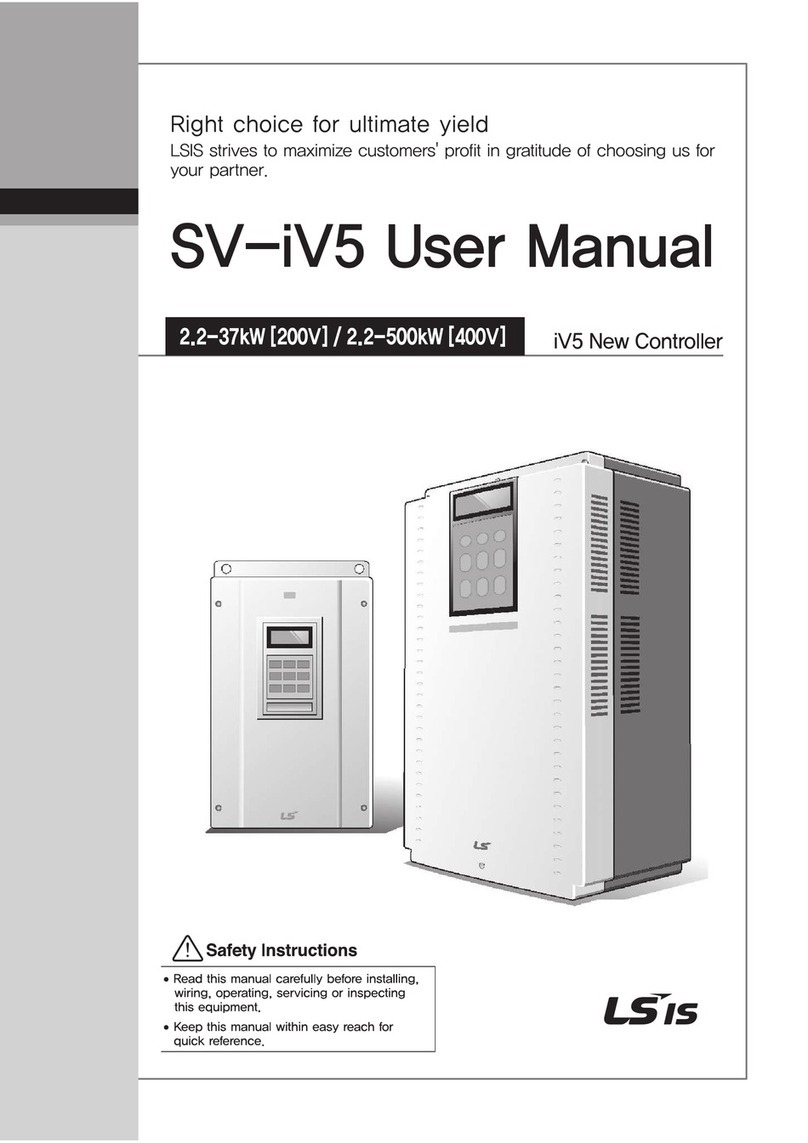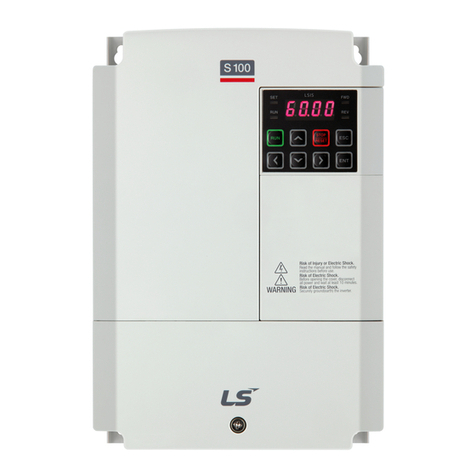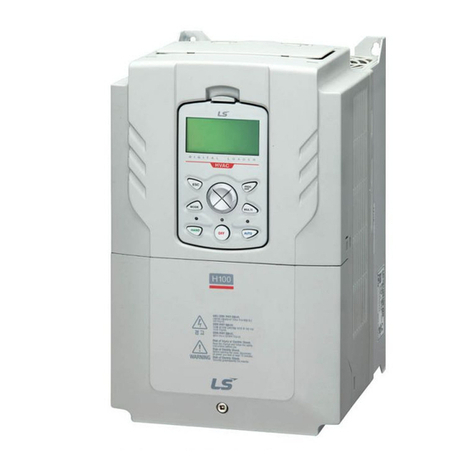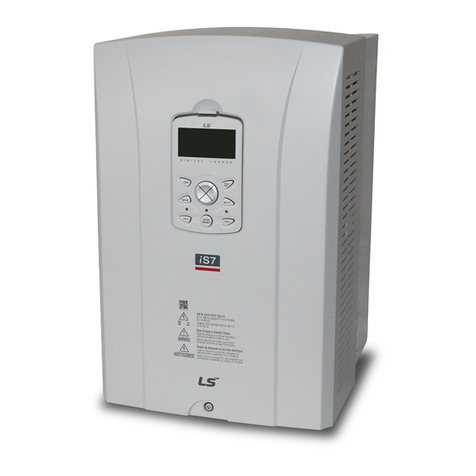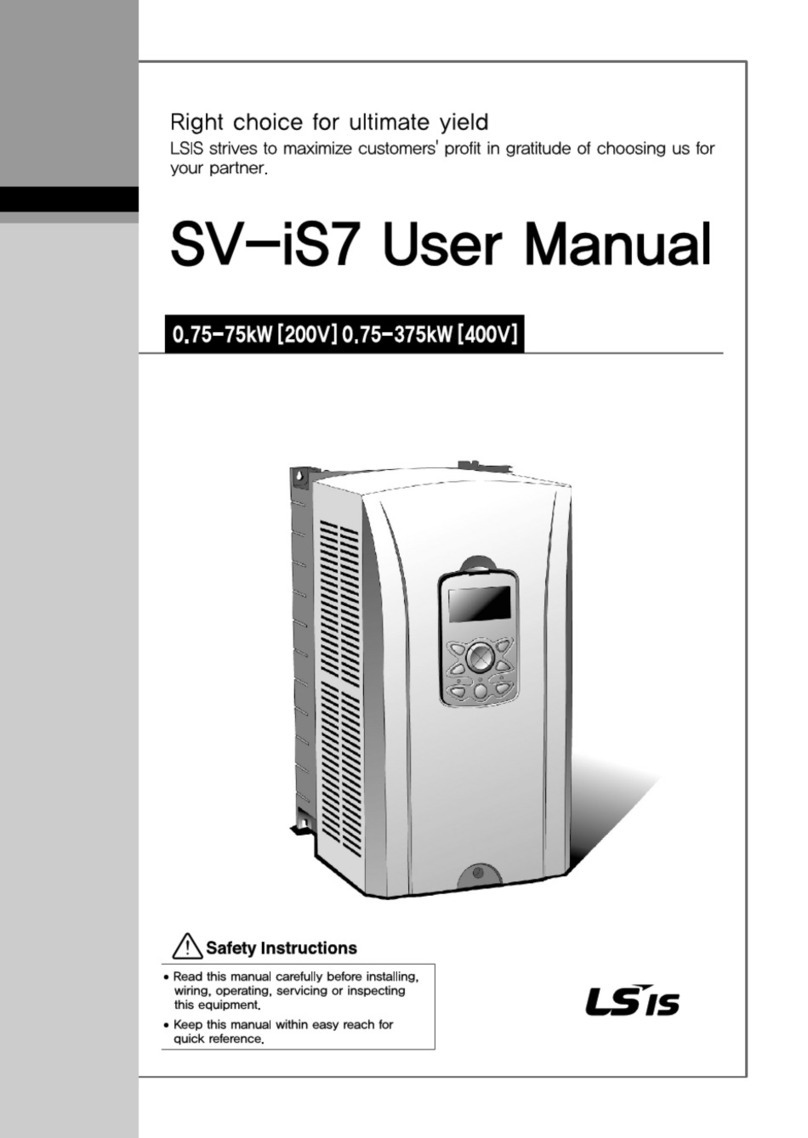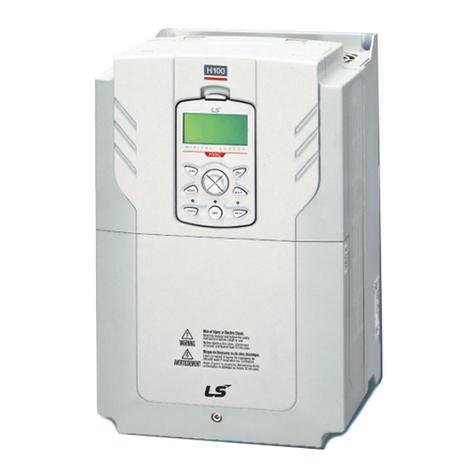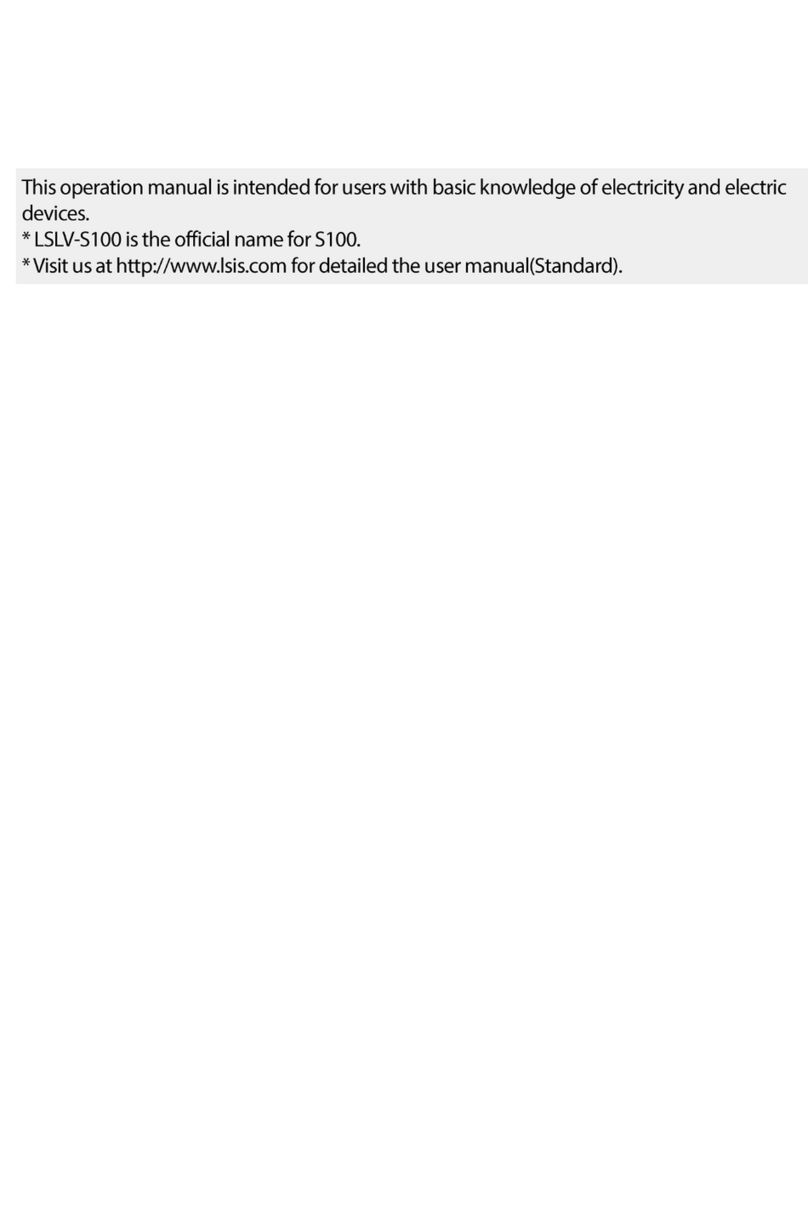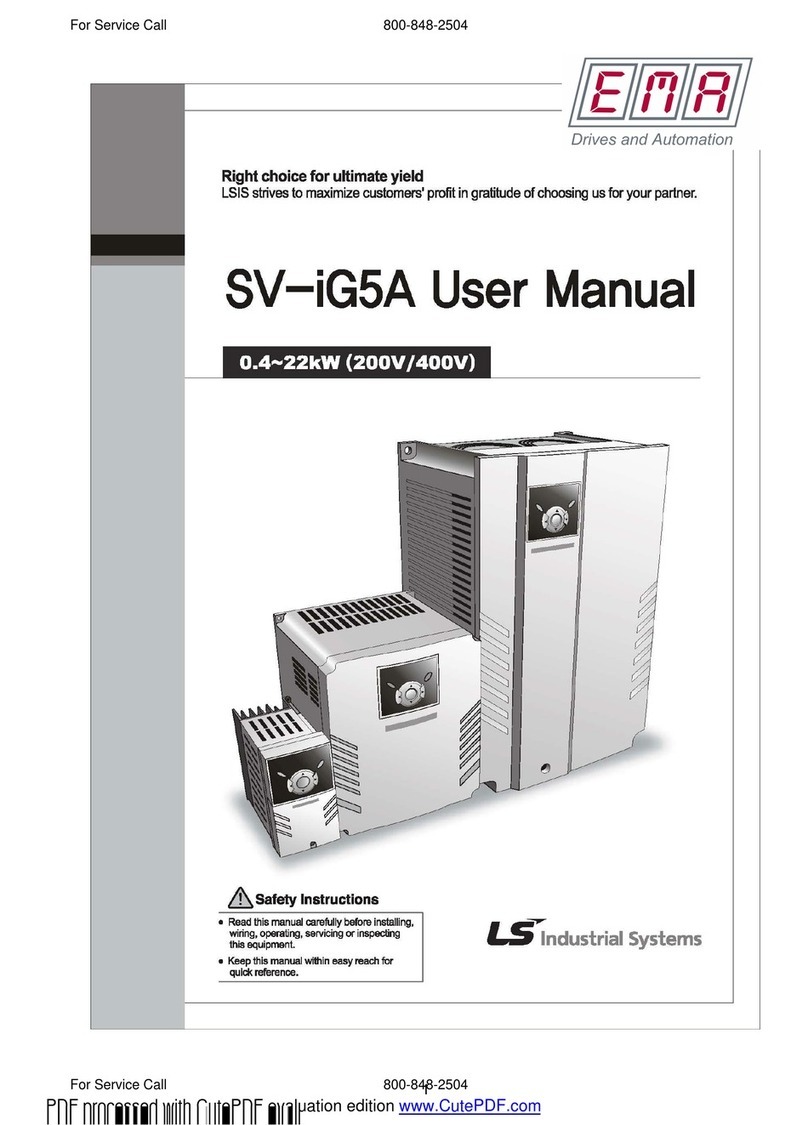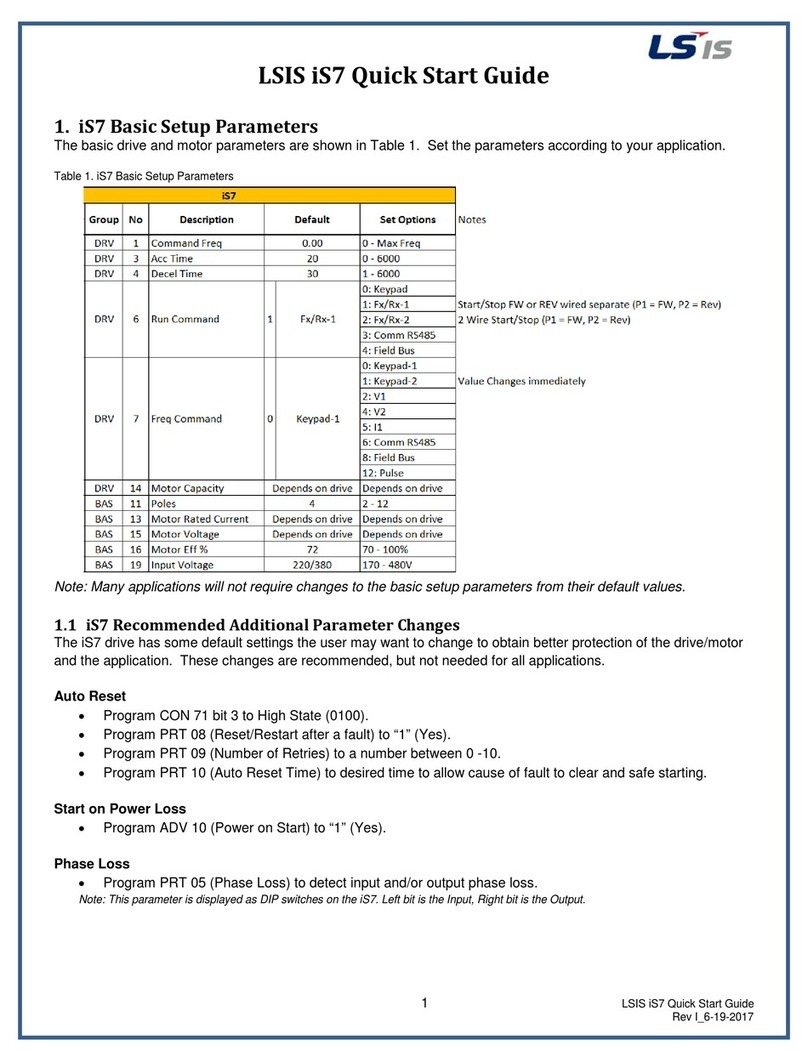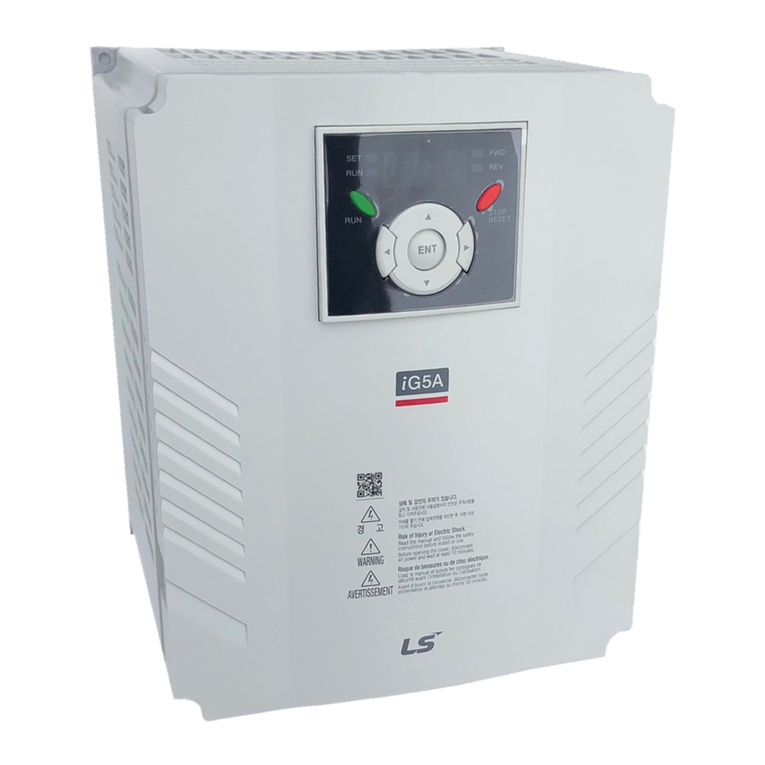
Table of Contents
CHAPTER 1 - BASIC INFORMATION.............................................................. 1-1
1.1 INSPECTION.........................................................................................................................................1-1
1.2 BASIC CONFIGURATION......................................................................................................................1-2
CHAPTER 2 - SPECIFICATION........................................................................ 2-1
2.1 200~230V CLASS (0.75~30KW/1~40HP)..........................................................................................2-1
2.2 380~480V CLASS (0.75~30KW/1~40HP).........................................................................................2-1
2.3 380 ~480VCLASS (37~90KW/50~125HP)....................................................................................... 2-2
2.4 380 ~480VCLASS (110~450KW/150~700HP).................................................................................2-2
2.5 DIMENSIONS........................................................................................................................................ 2-5
CHAPTER 3 - INSTALLATION ......................................................................... 3-1
3.1 INSTALLATION PRECAUTIONS ........................................................................................................... 3-1
3.2 WIRING ............................................................................................................................................... 3-4
CHAPTER 4 - OPERATION .............................................................................. 4-1
4.1 PROGRAMMING KEYPADS .................................................................................................................4-1
4.2 OPERATING EXAMPLE .......................................................................................................................4-8
4.3 VARIOUS FUNCTION SETTING AND DESCRIPTION ..........................................................................4-13
4.4 OPERATION EXAMPLE ..................................................................................................................... 4-19
CHAPTER 5 - PARAMETER LIST.................................................................... 5-1
5.1 PARAMETER GROUPS ......................................................................................................................... 5-1
5.2 PARAMETER LIST................................................................................................................................5-2
CHAPTER 6 -TROUBLESHOOTING AND MAINTENANCE........................... 6-1
6.1 FAULT DISPLAY.................................................................................................................................. 6-1
6.2 TROUBLESHOOTING...........................................................................................................................6-7
6.3 HOW TO CHECK POWER COMPONENTS ........................................................................................... 6-8
6.4 MAINTENANCE..................................................................................................................................6-10
CHAPTER 7 - OPTIONS.................................................................................... 7-1
CHAPTER 8 - RS485 COMMUNICATION ........................................................ 8-1
8.1 INTRODUCTION...................................................................................................................................8-1
8.2 SPECIFICATION................................................................................................................................... 8-2
8.3 OPERATION......................................................................................................................................... 8-3
8.4 COMMUNICATION PROTOCOL (RS485)............................................................................................. 8-4
8.5 PARAMETER CODE LIST ..................................................................................................................... 8-8
8.6 TROUBLESHOOTING.........................................................................................................................8-13
8.7 ASCII CODE LIST............................................................................................................................. 8-15
CHAPTER 9 - APPLYING DRIVES TO SINGLE-PHASE INPUT
APPLICATION 9-1
9.1 INTRODUCTION...............................................................................................................................9-1
9.2 POWER(HP), INPUT CURRENT AND OUTPUT CURRENT ................................................................9-2
9.3 INPUT FREQUENCY AND VOLTAGE TOLERANCE ...........................................................................9-2
9.4 WIRING AND PERIPHERAL DEVICE.................................................................................................9-2
